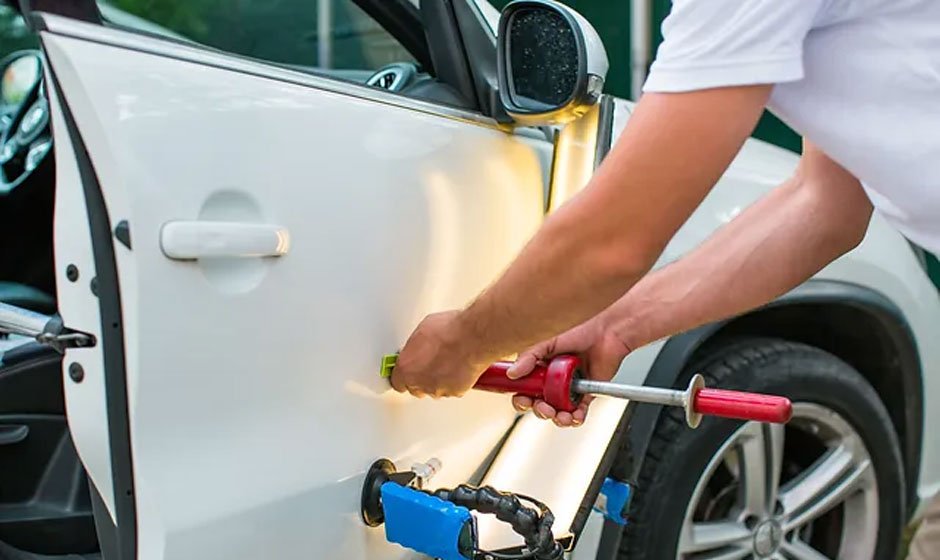Technicians can massage your dent back to its original shape using the right tools and techniques. This will prevent your car from having to be repainted and will keep its value intact. Generally, more minor dents and those located in easily accessible areas will be less expensive to repair than larger or deeper ones. The type of metal also plays a role in cost.
Paintless Dent Removal (PDR)
Trust us for expert and efficient car dent repair. A trained technician can use a glue gun and specialized tools to gently push and pull dents back into place without damaging the paint. This helps maintain your car’s original paint, keeping resale value high. The PDR method can also be done much faster than traditional methods. It’s an excellent option for repairing dents that result from a hailstorm or other minor damage. It’s also an environmentally friendly repair technique. It can take less time than traditional repairs, which can help you save on your bank account and the environment. However, PDR requires a lot of skill and patience to learn. A trained professional can do the job for you with a fraction of the time and cost of traditional repairs. Here’s how the process works:
Glue Pulling
Glue pulling is an alternative to traditional repair techniques requiring body fillers and repainting. This method is quicker and cheaper, preserving the original paint on the panel. It also allows for a more precise repair, especially on round dents and sharp creases that may be difficult to push out using dent removal rods alone. A technician applies hot glue to a special tab on the edge of the dent and connects it to a tool, such as a slide hammer or mini-lifter. Then, the tool pulls and manipulates the glue to pull the dent out until it’s nearly flush with the rest of the panel. This technique requires high-quality PDR adhesives that withstand various temperatures and weather conditions.
Pushing from the Back
When a dent occurs on your vehicle, the first thought is usually how much it will cost to fix. However, there are several ways to repair dents without needing costly traditional auto body repairs and potentially harmful chemicals. For example, you can use a DIY method called pushing from the back. This involves accessing the dent from behind and massaging it with specialized tools until it returns to its original shape. This technique is best for dents, just a little large or shallow. You can also try boiling water to shrink the metal and make it easier to push it back out with a rod. However, this can damage your paint job if you’re not careful. Alternatively, spray cool compressed air over the dent to help it pop out. You may need a dent puller if it doesn’t come out independently. Be sure to smooth any new dents as you pull them out.
Paint Matching
A professional paint job aims to provide a flawless, blemish-free finish. The best way to do this is to use color-matching technology to find the exact shade of your vehicle’s original paint, ensuring that your repaired area looks as good (if not better) as it did before the accident. Each vehicle’s paint color is assigned a unique code, which can be found on a sticker or plate inside the car. These codes help technicians find the exact formula to match your vehicle’s color, ensuring that the finished product is a perfect fit. If you cannot locate the color code on your vehicle, take a picture of an object or room with its color using a smartphone camera and bring it to your local paint store. The staff should be able to scan the color with their in-store spectrophotometer and get an extremely close match. This attention to detail ensures that your repairs look excellent and the color will fade evenly, allowing for a smooth transition with the rest of the vehicle’s bodywork.

